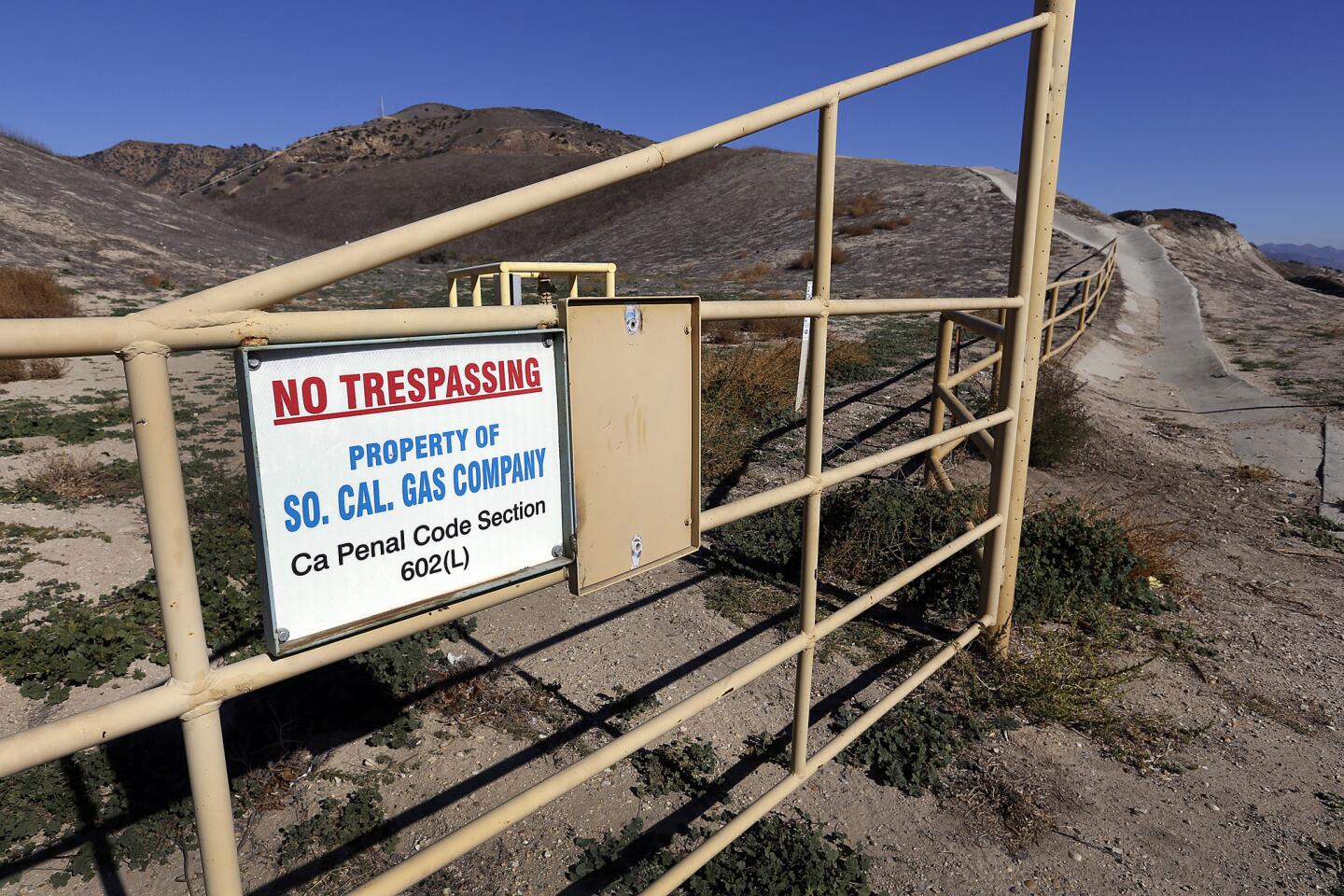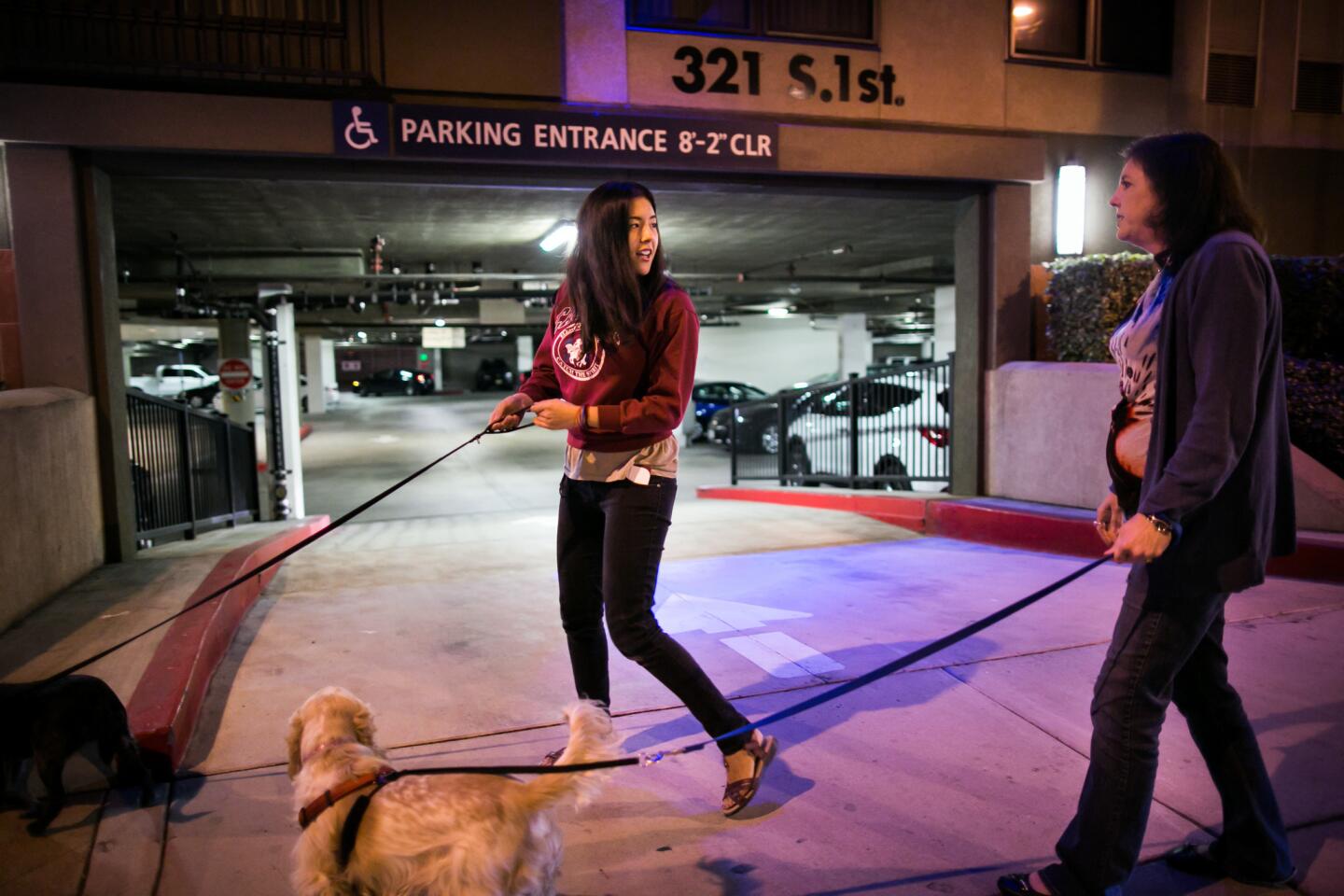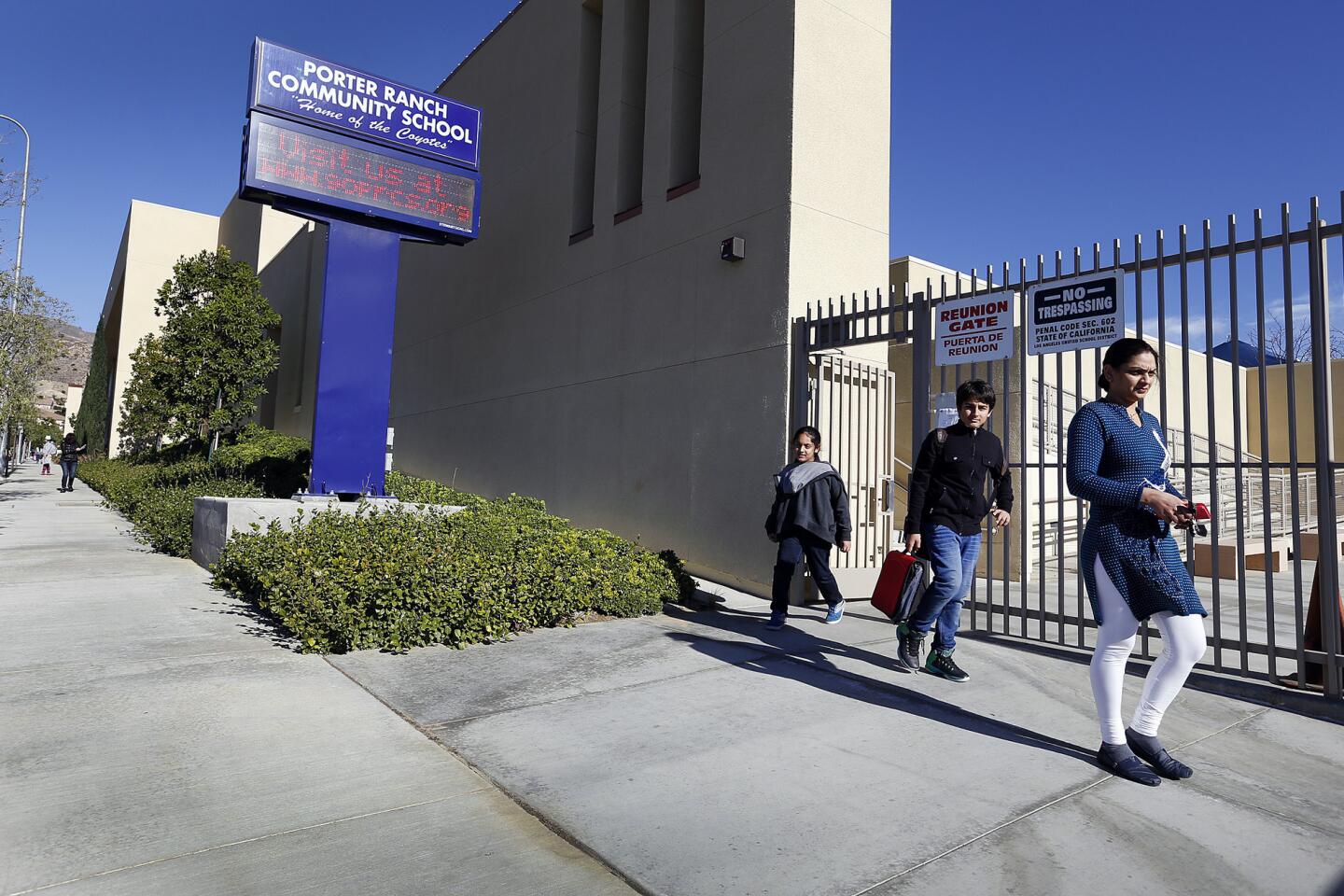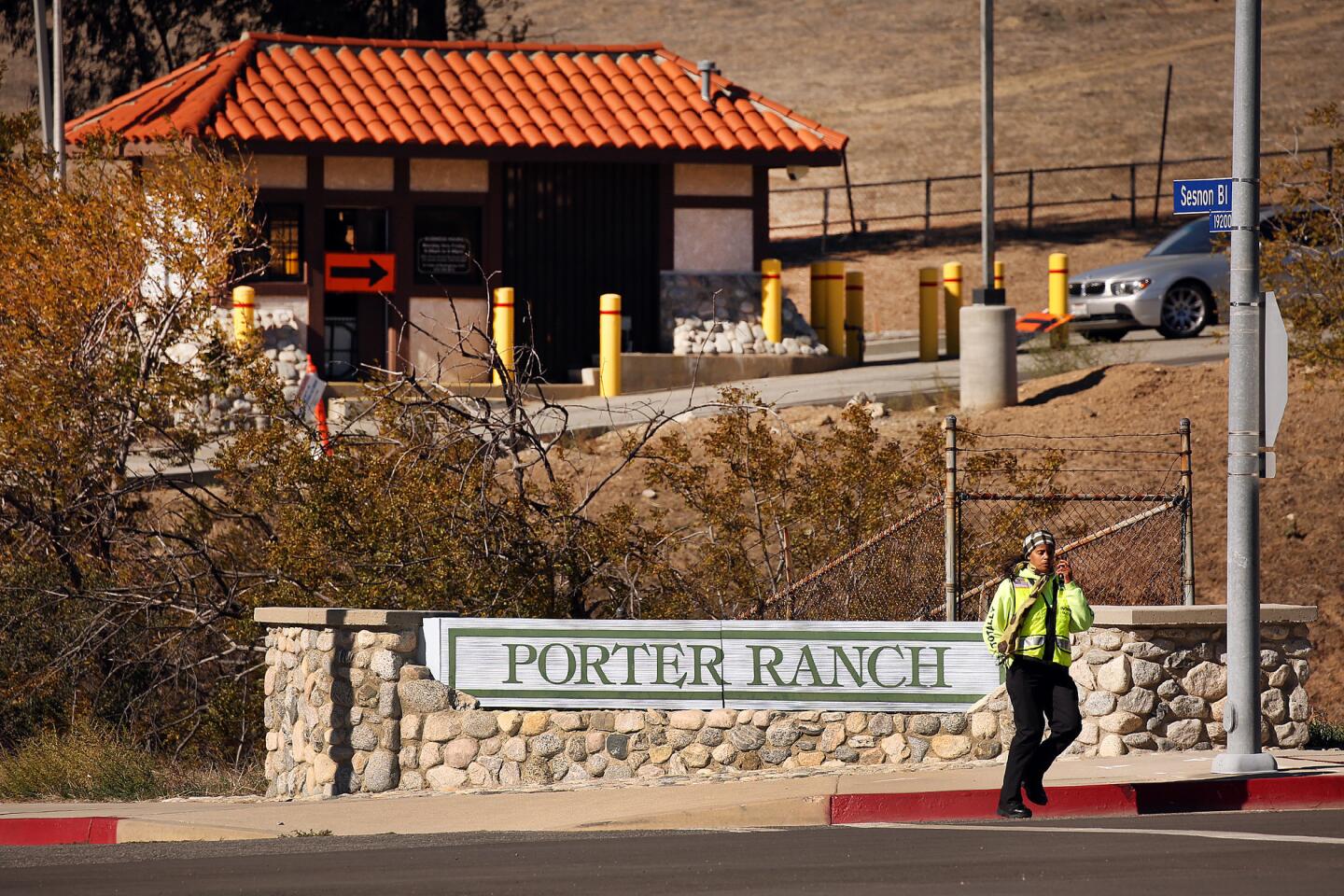Why a SoCal Gas exec is more optimistic about avoiding summer blackouts in L.A.
- Share via
A Southern California Gas Co. executive Monday gave a slightly more optimistic view of the summer blackout potential for the Los Angeles area if the utility’s Aliso Canyon natural gas storage facility remains closed -- an issue that will come up before a Senate committee Tuesday.
Bret Lane, chief operating officer for Southern California Gas, said the company built its system around use of Aliso Canyon, the largest natural gas storage plant in the state and fourth largest in the country. And although the utility maintains that the facility remains critical for the reliability of the energy system, Lane said the company is reviewing ways to keep the lights on in the event of an extended heatwave.
“I think the potential [for blackouts] is very real,” Lane said during an interview. “It’s a question of when the system gets stressed, can it stand up to the load requirements.”
Lane’s handicapping the likelihood of blackouts as “potential” is less dire than that contained in a report by the state’s energy agencies. The April report portrayed blackouts as probable this summer without the natural gas usually stored at the Aliso Canyon storage facility.
State lawmakers called for a hearing, scheduled for 9:30 a.m. Tuesday in Sacramento, after an article in The Times raised doubts about the energy agencies’ conclusion that Southern Californians could face intermittent blackouts during up to 14 days this summer because of short natural gas supplies in the wake of the Aliso Canyon shutdown.
Representatives of the three agencies -- the California Energy Commission, the California Public Utilities Commission and the California Independent System Operator -- will discuss the report’s conclusions at the hearing before the Senate Energy, Utilities and Communications Committee.
Aliso Canyon became the focus of national attention after one of the 115 wells at the facility began to leak in October. It took four months for Southern California Gas to stop the leak and seal the well, but not before forcing thousands of residents in the nearby Porter Ranch community to leave their homes and flee to temporary housing because of complaints of illness.
The leak and related expenses so far have cost Southern California Gas $665 million, virtually all of which has been covered by insurance.
Critics of the state report called the talk of blackouts a “threat” that the energy agencies and the utility companies, which helped draft the report, were using to help keep Aliso Canyon operating.
They pointed to possible uses of other parts of the energy system, such as Southern California Gas’ second-largest natural gas storage facility, the Honor Rancho field, about 10 miles north of Aliso Canyon in Los Angeles County.
Bill Powers of Powers Engineering in San Diego reviewed the state’s Aliso Canyon report for the Food & Water Watch advocacy group and said it seemed that the energy agencies and the utility companies spent more time finding excuses why alternatives to Aliso Canyon would not work rather than viable solutions.
“What about Honor Rancho?” Powers said. “They say, ‘Honor Rancho is hours away. Honor Rancho is not part of the system.’”
Energy consultant Robert McCullough agreed with Lane’s description of the key problem for Southern California Gas: The utility built its system and how it operates around use of the Aliso Canyon natural gas storage facility.
Now, the gas company and the state are reviewing other strategies.
“The system was built with the existing storage in place” at Aliso Canyon, said McCullough, who heads McCullough Research of Portland, Ore. “Everybody depended on it. What we are now seeing is full system testing, where you have to test the whole system to see what works and what doesn’t.”
Lane acknowledged that the utility companies are reviewing other possibilities, such as making use of the Los Angeles Department of Water and Power’s hydroelectric plants; tapping so-called peaking power units, which are called on during periods of high demand, including an 800-megawatt natural gas plant in Palm Springs that can ramp up to full capacity in 15 minutes; and using more circuitous pipeline routes that would enable Honor Rancho to provide some gas to the L.A. basin.
In addition, Lane said the energy agencies and the utilities are working to determine what the energy needs are on an hourly, daily and multiple-day basis to find ways to meet whatever the demand might be as the dog days of summer hit.
Even so, one primary aim is to return Aliso Canyon to service, Lane said.
“We are concerned about summer reliability,” he said. “We’re also concerned about winter reliability.”
State Sen. Fran Pavley (D-Agoura Hills), who is a member of the committee holding the hearing, has said that two-thirds of Porter Ranch residents don’t want Aliso Canyon to reopen.
Aliso Canyon still maintains 15 billion cubic feet of natural gas, or roughly 17% of its capacity, which Southern California Gas wants to tap. The utility currently can’t touch that supply or inject new gas into the field under an order by Gov. Jerry Brown.
Lane said the company has nearly completed the first of two phases of a review of the 114 remaining wells. About 10 wells have completed the second phase of testing.
By the end of August, Lane said, the company wants to begin injecting gas at Aliso Canyon again.
ALSO
El Segundo office campus sells for more than $300 million
Some emergency drought rules might be eased, but don’t start hosing down sidewalks
Follow me at @ivanlpenn
More to Read
Inside the business of entertainment
The Wide Shot brings you news, analysis and insights on everything from streaming wars to production — and what it all means for the future.
You may occasionally receive promotional content from the Los Angeles Times.


















